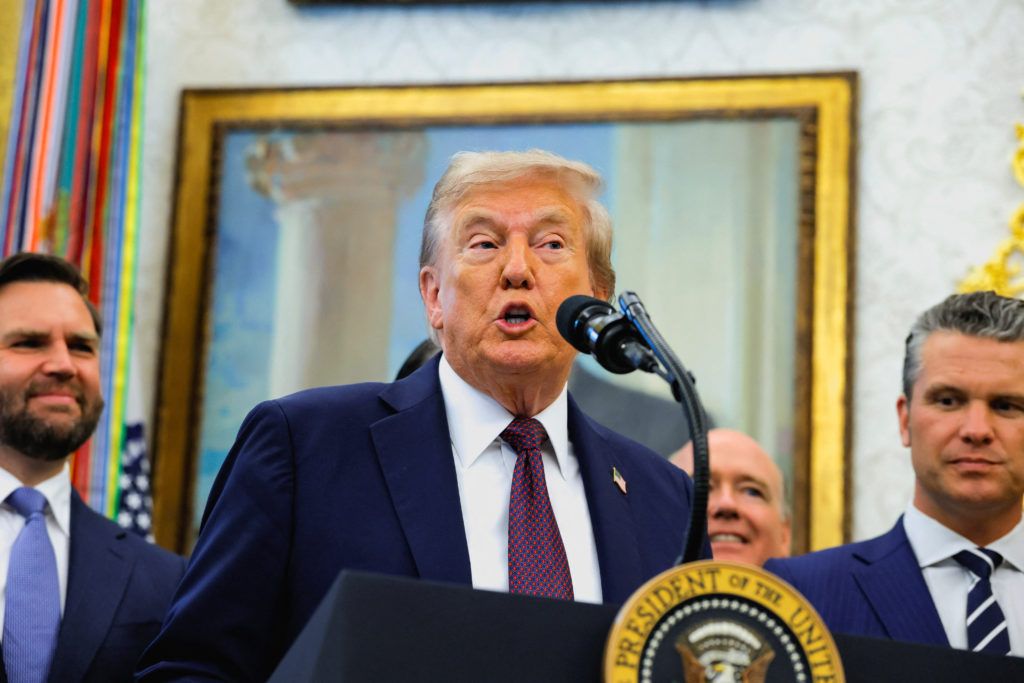
In a closely watched move on Wednesday, the United States Federal Reserve reduced its benchmark interest rate for the first time this year, responding to signs of a slowing labor market and growing concerns about the broader economy under rising political pressure from President Donald Trump.
The central bank announced a quarter-point cut, lowering the target rate range to 4.0%–4.25%, and indicated the possibility of two additional rate cuts before the end of 2025.
Fed Chair Jerome Powell, speaking during a post-meeting press conference, reiterated the Federal Reserve’s commitment to maintaining political independence, despite growing scrutiny over its decision-making. When asked about the recent appointment of Stephen Miran, a former White House economic advisor under Trump, Powell stated that the Fed had taken a “wait-and-see” approach in the months leading up to this week’s decision.
“We believed it was right to wait and assess how tariffs, inflation trends, and the labor market were developing before making this move,” Powell said.
The decision to cut rates was backed by 11 of the 12 voting members of the Federal Open Market Committee (FOMC). The lone dissenter was Miran, who had just been sworn in as a Fed governor on Tuesday following an expedited Senate confirmation. He pushed for a larger 50-basis-point cut, citing deeper concerns about economic momentum.
This marked Miran’s first meeting as a voting member, having previously chaired the White House Council of Economic Advisers. His presence on the board, without formally resigning from his White House post, has sparked criticism from Democrats who argue it could compromise the Fed’s independence.
President Trump has increased his criticism of the Federal Reserve this year, frequently demanding aggressive rate cuts and openly attacking Powell for what he perceives as overly cautious monetary policy. His administration has also taken more direct action: replacing a retiring Fed official with Miran and attempting to remove Fed Governor Lisa Cook in August, a move that triggered ongoing legal challenges.
Cook, who became the first Black woman to serve on the Fed’s Board of Governors, remains in her role after a federal appeals court temporarily blocked her removal. The Trump administration is reportedly planning to escalate the case to the Supreme Court.
Powell declined to comment on the Cook matter during the press conference.
Despite heightened uncertainty, the Fed raised its U.S. economic growth forecast for 2025 to 1.6%, up from 1.4% in June. However, it left its unemployment and inflation projections unchanged. Inflation remains above the Fed’s 2% target, but Powell indicated that employment risks now outweigh inflationary pressures, at least in the short term.
“Downside risks to employment have increased, even though inflation remains somewhat elevated,” the Fed said in its official statement. “Job gains have slowed, and the unemployment rate has edged higher, though it remains low overall.”
The Fed has kept interest rates steady since December, as it monitored the economic fallout from Trump’s tariff policies. Powell noted that the impact of tariffs on consumer prices has been more muted than originally expected.
A slim majority of FOMC members now expect at least two more rate cuts in 2025, a slightly more dovish outlook than previously projected. However, Powell cautioned that future moves will depend on incoming data.
“We’re not on a preset path,” he said. “The economic projections are best viewed as reflecting probabilities, not certainties.”
Economists warn that recent developments including Miran’s appointment and the legal battle over Lisa Cook could erode the perception of the Fed’s independence.



